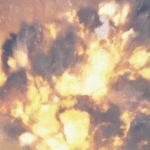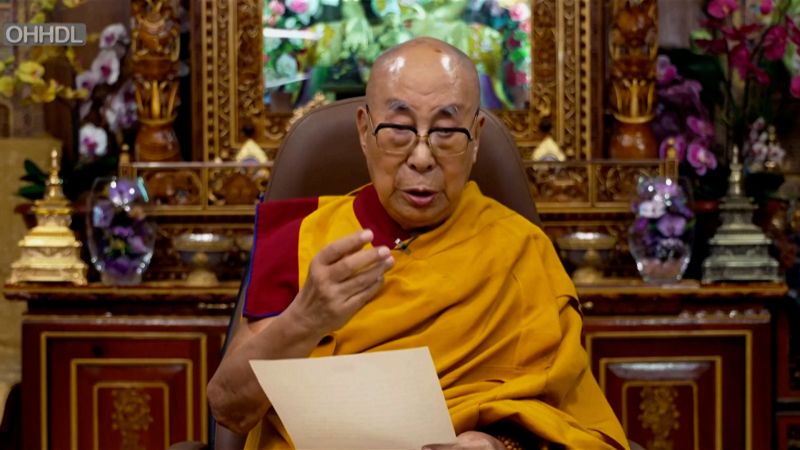The Dalai Lama has announced his intention to reincarnate after his death, ensuring the continuation of a centuries-old tradition that remains a focal point in the ongoing conflict between Tibet and China. This declaration, made ahead of his 90th birthday, asserts that his office holds the “sole authority” to recognize his future reincarnation. This statement sets the stage for a potential clash over succession, with Beijing asserting its own claim to authority in the matter.
The announcement comes as tensions between the Tibetan spiritual leadership and China’s Communist Party have been escalating. The Dalai Lama’s decision to publicly affirm his reincarnation plans is seen as a direct challenge to Beijing’s attempts to exert control over Tibetan Buddhism and its leadership succession.
Historical Context and Significance
The tradition of reincarnation among Tibetan lamas dates back centuries and is a cornerstone of Tibetan Buddhism. The Dalai Lama, as the spiritual leader of Tibet, is considered a manifestation of the Bodhisattva of Compassion. Historically, the selection of his reincarnation has been a deeply spiritual process, involving senior monks and spiritual signs.
However, the Chinese government has long sought to influence this process as part of its broader strategy to integrate Tibet into the Chinese state. In 1995, Beijing controversially appointed its own Panchen Lama, the second highest figure in Tibetan Buddhism, after rejecting the Dalai Lama’s choice. This move was widely criticized by the international community and has led to ongoing disputes over religious freedom in Tibet.
Expert Opinions and Reactions
Experts in Tibetan affairs suggest that the Dalai Lama’s recent statement is a strategic move to preempt China’s attempts to control his succession. According to Dr. Tenzin Dorjee, a scholar of Tibetan Buddhism, “The Dalai Lama’s declaration is both a spiritual and political act. It reaffirms his role as the legitimate spiritual leader of Tibet and challenges China’s narrative.”
Meanwhile, Chinese authorities have reiterated their stance that they have the right to approve the next Dalai Lama, citing historical precedent. “The central government has the authority over the reincarnation of the Dalai Lama,” said a spokesperson for China’s State Administration for Religious Affairs.
Implications for Tibet’s Future
The implications of this announcement are significant for Tibet’s future. The Dalai Lama remains a symbol of Tibetan identity and resistance against Chinese rule. His succession is not only a religious matter but also a political one, with the potential to influence the region’s stability and international relations.
According to a report by the International Campaign for Tibet, the succession process could lead to increased tensions and unrest in the region. “The Chinese government’s attempts to control the reincarnation process undermine the religious freedoms of Tibetans and could exacerbate tensions,” the report states.
“The Dalai Lama’s declaration is both a spiritual and political act. It reaffirms his role as the legitimate spiritual leader of Tibet and challenges China’s narrative.” – Dr. Tenzin Dorjee
Looking Ahead
As the Dalai Lama approaches his 90th birthday, the question of his succession remains a critical issue. Analysts suggest that the international community will play a crucial role in supporting a fair and legitimate process. The Dalai Lama has previously indicated that he may choose to reincarnate outside of Tibet, further complicating the situation.
The move represents a pivotal moment in the ongoing struggle for Tibet’s cultural and religious autonomy. As the world watches, the future of Tibetan Buddhism and its leadership hangs in the balance, with the potential to shape the region’s geopolitical landscape for years to come.
The next steps in this unfolding story will likely involve diplomatic efforts, religious dialogues, and increased scrutiny from global human rights organizations. The Dalai Lama’s declaration has not only reaffirmed his spiritual legacy but also highlighted the enduring complexities of Tibet’s relationship with China.
About The Author
 Explosive Fireworks Warehouse Blaze Triggers Evacuations in California
Explosive Fireworks Warehouse Blaze Triggers Evacuations in California Brad Pitt’s F1 Film Thrills at Box Office but Falls Short on Emotional Depth
Brad Pitt’s F1 Film Thrills at Box Office but Falls Short on Emotional Depth Superman’s Allies: Why Green Lantern and Others Join the Justice Gang in DCU Film
Superman’s Allies: Why Green Lantern and Others Join the Justice Gang in DCU Film HP’s 15.6-Inch Touchscreen Laptop Slashed by 69%, Now $900
HP’s 15.6-Inch Touchscreen Laptop Slashed by 69%, Now $900 Social Engineering’s Role in Ransomware Surge: KnowBe4’s Call to Action
Social Engineering’s Role in Ransomware Surge: KnowBe4’s Call to Action